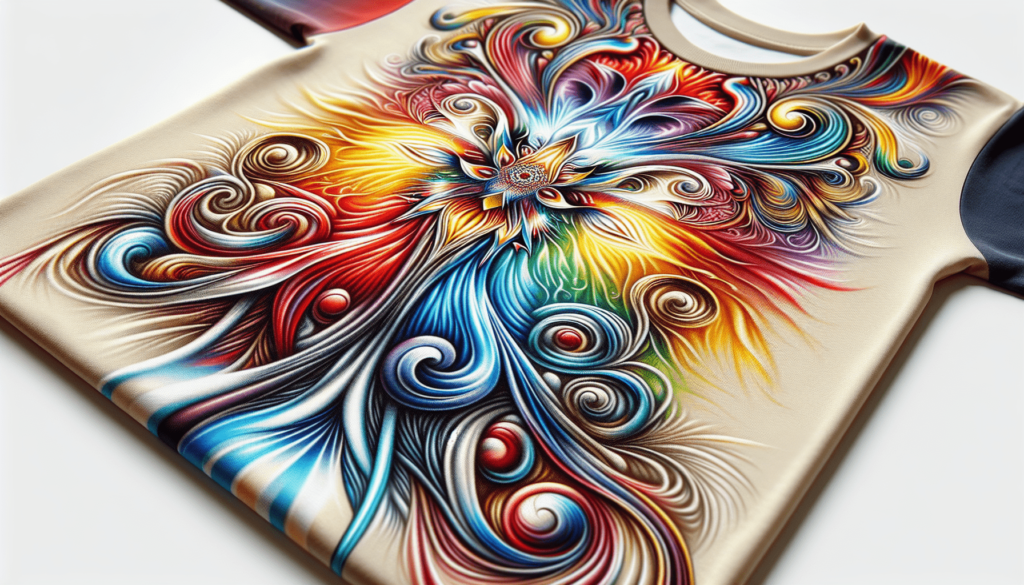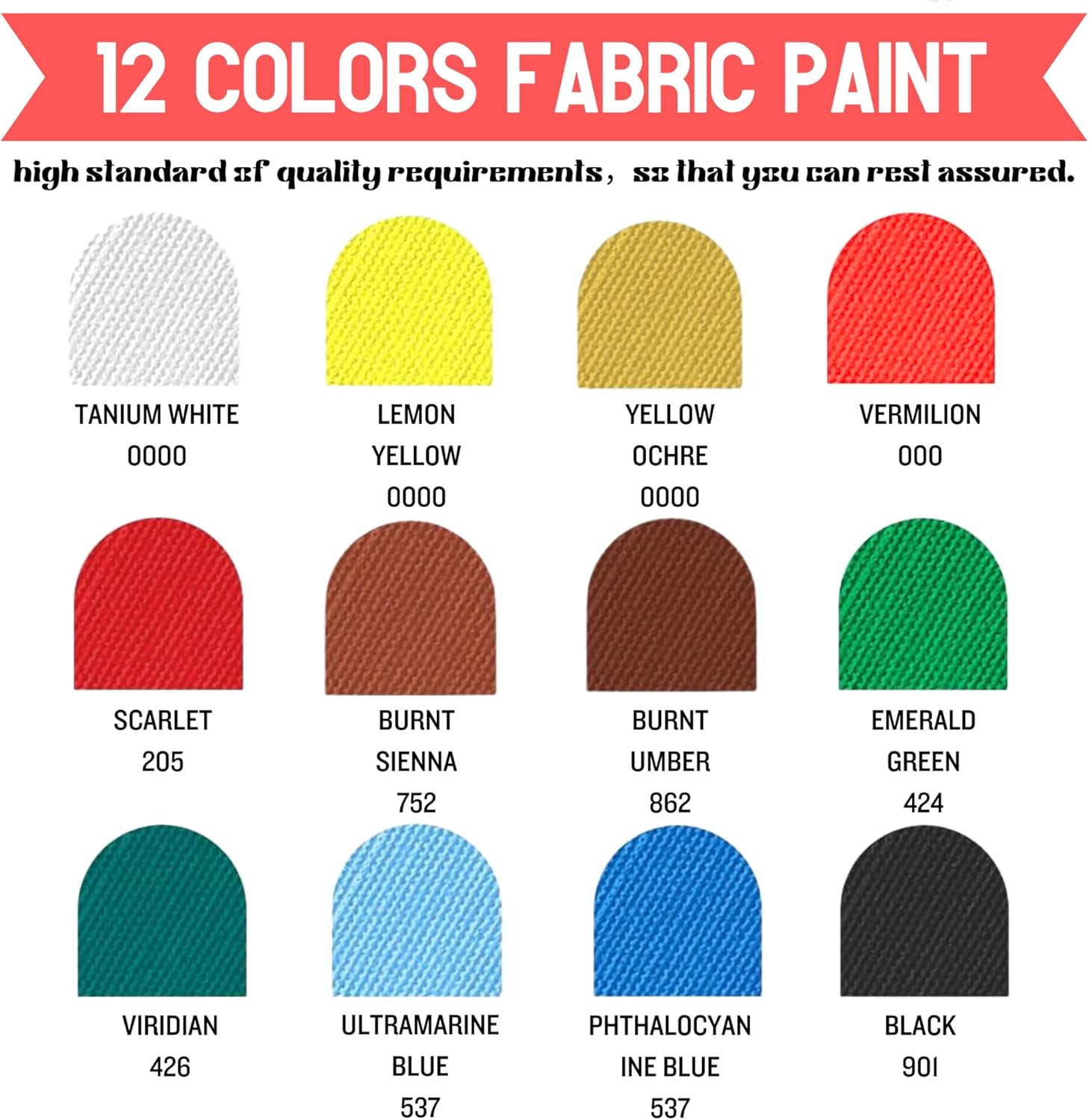In this article, you will discover effective techniques to ensure that fabric paint remains vibrant and long-lasting even after repeated washes. Whether you are a DIY enthusiast or a professional artist, preventing the fading and flaking of fabric paint can be crucial in maintaining the quality and integrity of your artwork. By implementing simple yet powerful strategies, you can confidently showcase your creative designs on textiles without worrying about the color bleeding or washing away. With practical tips and expert advice, you will learn how to preserve the beauty and durability of fabric paint for years to come.
Choosing the Right Fabric Paint
When it comes to selecting fabric paint, one of the most important factors to consider is whether the paint is specifically designed for washing. Regular acrylic paint may not adhere well to fabrics and can wash off or fade after a few washes. Look for fabric paints that are labeled as washable or specifically designed for use on fabrics. These paints are formulated to withstand repeated washing without losing their color or adherence to the fabric.
Another important consideration when choosing fabric paint is to ensure that it is suitable for the material you will be painting on. Different fabrics have different properties and require different types of paint. For example, certain paints may work well on cotton but not on silk. Before purchasing fabric paint, check the label or instructions to see if it is recommended for use on the type of fabric you plan to paint.
In addition to considering the type of fabric, it is also crucial to examine the permanence rating of the fabric paint. The permanence rating indicates how well the paint will hold up over time and repeated washing. Look for fabric paints with a high permanence rating if you want your designs to remain vibrant and intact even after multiple washes.
Preparing the Fabric
Before applying fabric paint, it is essential to prepare the fabric properly to ensure optimal adhesion and longevity of the paint. Start by washing and drying the fabric according to its care instructions. This step helps remove any dirt, oils, or sizing agents that may be present on the fabric’s surface, which can interfere with the paint’s ability to adhere.
After washing, iron the fabric to remove any wrinkles. Smooth fabric provides a better surface for painting and helps the paint adhere more evenly. Be sure to set the iron to the appropriate temperature for the fabric type to avoid damage or scorching.
To further enhance the adhesion of the fabric paint, consider using fabric softener or vinegar during the washing process. These additives can help remove any remaining residue from the fabric and create a clean surface for the paint to adhere to. Simply add a small amount of fabric softener or vinegar to the final rinse cycle when washing the fabric.
For fabrics that have sizing or finishes, it is recommended to pre-wash and dry them before painting. Sizing agents and finishes can create a barrier that prevents the paint from adhering properly. Pre-washing helps remove these substances and ensures a better bond between the fabric and paint.

Priming the Fabric
Before applying the fabric paint, it is beneficial to prime the fabric with a fabric primer or pre-treatment solution. Fabric primers create a protective layer between the fabric and paint, enhancing adhesion and preventing the paint from bleeding or spreading. Apply the fabric primer according to the manufacturer’s instructions, ensuring complete coverage of the fabric’s surface.
When priming the fabric, it is crucial to avoid using conditioner or fabric softener before the pre-treatment step. These products can leave a residue on the fabric, which can negatively affect the paint’s adherence. Instead, focus on using fabric primers or pre-treatment solutions that are specifically formulated for enhancing paint adhesion.
After applying the fabric primer, allow it to dry completely before starting to paint. This drying time ensures that the fabric is ready to accept the paint and minimizes the risk of smudging or smearing the design.
Applying the Fabric Paint
When it comes to applying fabric paint, using the correct paintbrush or applicator for the desired effect is essential. Different brushes and applicators offer different textures and techniques. For intricate designs and fine details, consider using a small brush or fine-tipped applicator. For larger areas or smoother coverage, a broader brush or sponge applicator may be more suitable.
To achieve the best results, apply thin layers of paint to the fabric. This allows the paint to dry more evenly and reduces the risk of cracking or flaking. Coat the fabric with multiple thin layers, allowing each layer to dry completely before applying the next. Be patient during this process to ensure a durable and vibrant design.
While it may be tempting to apply excessive amounts of paint for better coverage, it is crucial to avoid this. Excessive paint application can result in longer drying times, increased risk of smudging, and a less comfortable or flexible fabric feel. Instead, focus on achieving full coverage by layering thin coats of paint until the desired effect is achieved.
Make sure to cover the entire design area thoroughly while painting. Leaving any gaps or unevenly painted areas can result in an incomplete or patchy design. Take your time and pay attention to detail to ensure a professional-looking finished product.

Heat Setting the Fabric Paint
To ensure that the fabric paint adheres to the fabric and remains intact during washings, heat setting is crucial. Heat setting helps to bond the paint to the fibers of the fabric, making it more resistant to fading, washing off, or cracking.
To heat set the fabric paint, use a hot iron. Check the manufacturer’s instructions for the recommended temperature and duration for heat setting. Typically, it is recommended to set the iron to the highest heat setting suitable for the fabric type and apply direct heat to the painted area for several seconds.
To protect the painted area from direct contact with the hot iron, place a press cloth or parchment paper over it before ironing. This layer helps distribute the heat more evenly and prevents any potential smudging or damage to the design. Apply even pressure while ironing to ensure proper heat transfer and prevent any distortions or inconsistencies in the paint.
Allowing Sufficient Drying Time
After completing the painting and heat setting process, it is crucial to allow the painted fabric to dry undisturbed for the recommended drying time. Each fabric paint brand or type may have different drying times, so refer to the manufacturer’s instructions for guidance. Avoid touching or folding the fabric during this period to prevent smudging or damaging the design.
To speed up the drying process, provide proper air circulation around the painted fabric. This can be achieved by placing the fabric in a well-ventilated area or using fans to circulate the air. Remember not to stack or fold the fabric before it is completely dry to avoid any transfer or distortion of the paint.
Avoiding Harsh Washing Methods
When it comes to washing fabric painted with fabric paint, it is essential to choose gentle washing methods to preserve the design’s quality and longevity. Handwashing or using the gentle cycle on the washing machine are recommended to minimize the stress on the fabric and prevent paint damage. Follow the fabric’s care instructions regarding water temperature, detergent, and washing duration.
To protect both the fabric and the painted design, it is advisable to use mild detergent specifically formulated for delicate fabrics. Harsh chemicals and bleach can damage the fabric and cause the paint to fade or deteriorate. Opt for gentle, phosphate-free detergents to ensure the best outcome.
To further protect the painted design, consider turning the fabric inside out before washing. This helps minimize any friction or rubbing between the painted surface and other garments or surfaces in the washing machine.
Proper Care of Painted Fabrics
To ensure the longevity and quality of your painted fabric, it is essential to provide proper care. Avoid abrasive cleaning methods or scrubbing the painted area, as this can damage the design and cause the paint to flake off. Instead, opt for gentle cleaning techniques, such as softly dabbing or using a soft cloth, to remove any stains or dirt.
When drying the fabric, avoid using high heat settings or placing it in direct sunlight. Excessive heat and sunlight can cause the paint to fade or deteriorate. Opt for low heat settings or air-drying to prevent any potential damage to the design.
When storing your painted fabric, ensure it is kept away from direct sunlight or extreme temperatures. This will help prevent any fading or discoloration of the paint. Additionally, consider turning the fabric inside out before ironing to protect the painted surface from direct contact with the iron.
Testing the Fabric Paint
Before starting a large-scale project or using the fabric paint on valuable or important fabrics, it is recommended to perform a patch test on a small, inconspicuous area of the fabric. Apply the paint according to the recommended techniques and allow it to dry and heat set. Afterward, wash and dry the fabric following the recommended methods.
Observe any changes or damages to the fabric or the painted design after the test. If the paint adheres well, retains its color, and resists fading or washing off, you can proceed with confidence. If any issues arise, adjust your painting and heat setting techniques accordingly or consider trying a different brand or type of fabric paint.
Reapplying and Touching Up
After each wash, it is advisable to examine your painted fabric to check for any signs of fading or wear. If you notice any areas where the paint has faded or washed off, you can reapply or touch up those sections to restore the design’s integrity.
For precise touch-ups, consider using a small brush or fine-tipped applicator to ensure accuracy and maintain the integrity of the original design. Select the appropriate fabric paint color and follow the same painting and heat setting techniques mentioned earlier to achieve a seamless touch-up.
By following these comprehensive steps, you can choose the right fabric paint, properly prepare the fabric, apply the paint effectively, heat set it, and care for your painted fabrics to ensure long-lasting, vibrant designs that withstand repeated washings. With the right techniques and attention to detail, you can create stunning fabric pieces that will remain beautiful and durable for years to come.



